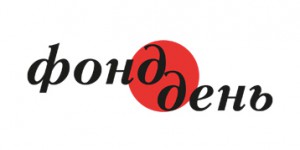By Yuri ANDRUKHOVYCH, The Day
I do not consider myself an art critic, nor do I belong with all those
art managers. I am not versed in all theoretical subtleties and trade secrets.
All I am left is fragmentary observations, sometimes here in Ukraine and
sometimes abroad.
I can generalize the essence of my observations as follows.
First, the arts of our day, freed from totalitarianism, are still subject
to timeserving and conformity. There is nothing strange in this. In fact,
the idea that art can be nonconformist and independent of its immediate
environs belongs to an early openly antibourgeois stage of modernism. People
in the creative domain discovered that this very antibourgeois approach
can be sold profitably. Today's criterion of success remains the same:
the ability to sell oneself. I will not even mention all those "personality
ratings," creative elite kept under control by dealers and bound hand and
foot by uniform contracts setting the ceiling of creative self-repetition
- in other words, providing for an opportunity to squeeze as much dough
as possible from every temporarily favorable market situation.
Actually, I have in mind another kind of conformism and timeserving.
I mean that "middle class" in the creative realm, all those living mainly
from filling in applications addressed to various foundations, centers,
institutes, and banks (also to Western embassies, given our Ukrainian,
and until recently, Eastern European conditions). Getting a fellowship
or grant is impossible without getting to be liked (timeserving) and being
in the right place at the right time, doing the right thing (conformism).
The essential reorientation of modern creative personalities toward "action,"
"performance," "publicity" (regardless of the size of the audience, even
its and the critics' response) is, in my opinion, caused by that same dependence
on the grant-giver. It would be hard to picture a foundation subsidizing
some vague project like painting so many pictures. A foundation is supposed
to be stingy, but it is bound to buy something like "fall hog-killing"
because it is something you can draw up a budget for, and the idea of civil
society remains alive and well.
From this necessity to convince the grant-giver and win the contest
in writing or words, follows another hallmark of today's art, its conceptuality.
Here every concept must be clear-cut (the fund's functionaries must be
fully aware of how their money is going to be used), stated using several
sentences, while addressing a certain social problem. An Austrian woman
named Elke Krischtufek reaches orgasm masturbating in public, something
that could be used as a commentary on bringing to the level of societal
concern women's intimate life in a sex-saturated society. An Austrian man,
Hermann Nitch, splashes tons of fresh blood brought from Vienna's largest
slaughterhouses over huge white spots as a commentary on eating meat as
a form of murder. Oleh Kulyk bites women's legs at the entrance to a dadaist
jubilee exhibit. A commentary on commercializing dadaism as a phenomenon.
One could cite countless other "ecological," "ecumenical," "political-analytical"
or "psychophysiological" commentaries.
The conceptualism of such events de facto rules out the criterion
of being unspoken, that which in the early Middle Ages came to be known
as imponderable. The latter was actually regarded as a sacral hallmark
of that genuinely pure, although always a bit shaded hermetic art. A revolution
is taking place, perhaps for the first time in the history of the visual
arts, when visuality as such is supplanted by verbalization. The old truth
that seeing is believing loses its urgency. Action art does not have to
be seen to fully appreciate its products. It suffices to hear about it
or read a detailed account. For latter-day artists communicating with works
of art is not as important as information about them. Video recording also
exists as a form of description which is impossible without verbal accompaniment.
This verbalization makes it possible to talk about new myths - or at least
new anecdotes. Indeed, concepts aptly, wittily formulated stand the greatest
chance, for they can be easily retold. One example is growing an ice cap
over Mount Everest so it measures exactly 9,000 meters in height.
It remains to note the unprecedented sluggishness of domestic action-mongers,
for our schizophrenic realities offer occasions of which their Western
colleagues would never dream. I would be personally willing, even happy
to take part in some pie-throwing at the Verkhovna Rada Deputies. Wishful
thinking, of course.






